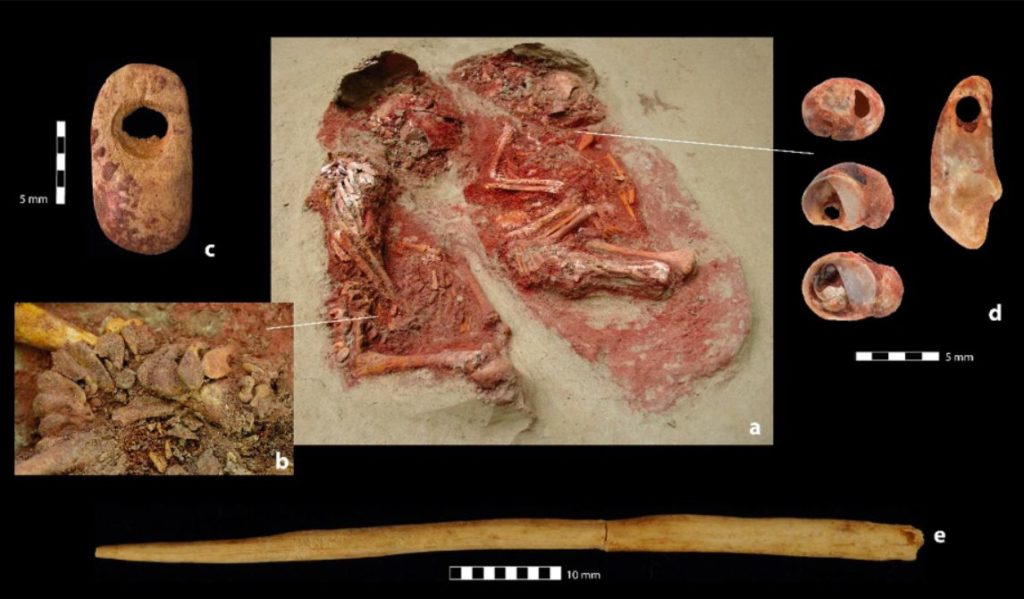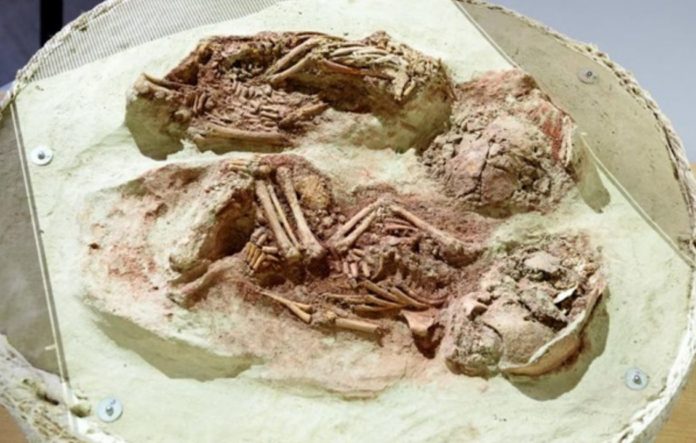Genome-wide sequencing of ancient DNA shows that male babies buried in the same grave about 30,000 years ago are the earliest recorded case of monozygotic twins.
Austrian scientists reported the discovery of the skeletons of two newborn identical male twins, which were born about 30 thousand years ago in the ancient city of Krems an der Donau. Both babies were full-term, but one died immediately after giving birth, and the other six to seven weeks later. The find is described in the journal Communications Biology.
The remains rested in an oval-shaped grave pit. The bodies of both babies were covered with red ochre, and their heads were facing east. At the same time, the twins were buried together with the with funeral accessories: one had beads made of mammoth tusks around the pelvis (no signs of wear were found on them, therefore, they were made specifically for burial), and the second was put on a necklace of molluscs.
Nearby, only one and a half meters to the north, a longer and narrower single grave was found – it contained the poorly preserved and also ochre-covered skeleton of another baby, who was buried in a bent position. He died 13-14 weeks after birth. This skeleton was also facing east, but the skull was facing south. In contrast to the burial of twins, the solitary grave was simply filled up. Most likely, scientists believe, this led to the fact that the bones in it are no longer so well preserved.

Since the babies from the double burial rested together, the researchers immediately assumed that they were either twins, or at least close relatives. However, the burial was not simultaneous, but sequential. Apparently, initially the grave was dug for one child – and his remains occupy the main space – and the second, after the burial was opened, was placed closer to the edge of the pit.
“Evidence for the existence of twins in archaeological records is extremely rare and has never been confirmed by DNA testing. We were able to confirm this by taking samples of their skulls and bones. DNA analysis showed that the children had the same main Y chromosome and mitochondrial haplogroups, that is, a common genome. From this, we concluded that monozygotic male twins were buried in the double grave, while the third baby placed in the second grave turned out to be their male relative (third degree of relationship). The age at which the children died was determined by the length of the bones and the stage of tooth development”
the scientists noted.
Experts could not establish the exact cause of death of children.
“Twin pregnancy is risky and associated with a higher prevalence of perinatal mortality. The nonspecific stress symptom of newly formed subperiosteal bony formations on the tibia of the first twin, combined with atypical underlined lines on the enamel of the teeth, indicates the experience of severe stress and / or insufficient nutrition, which could contribute to the early death of newborns”
they concluded.
